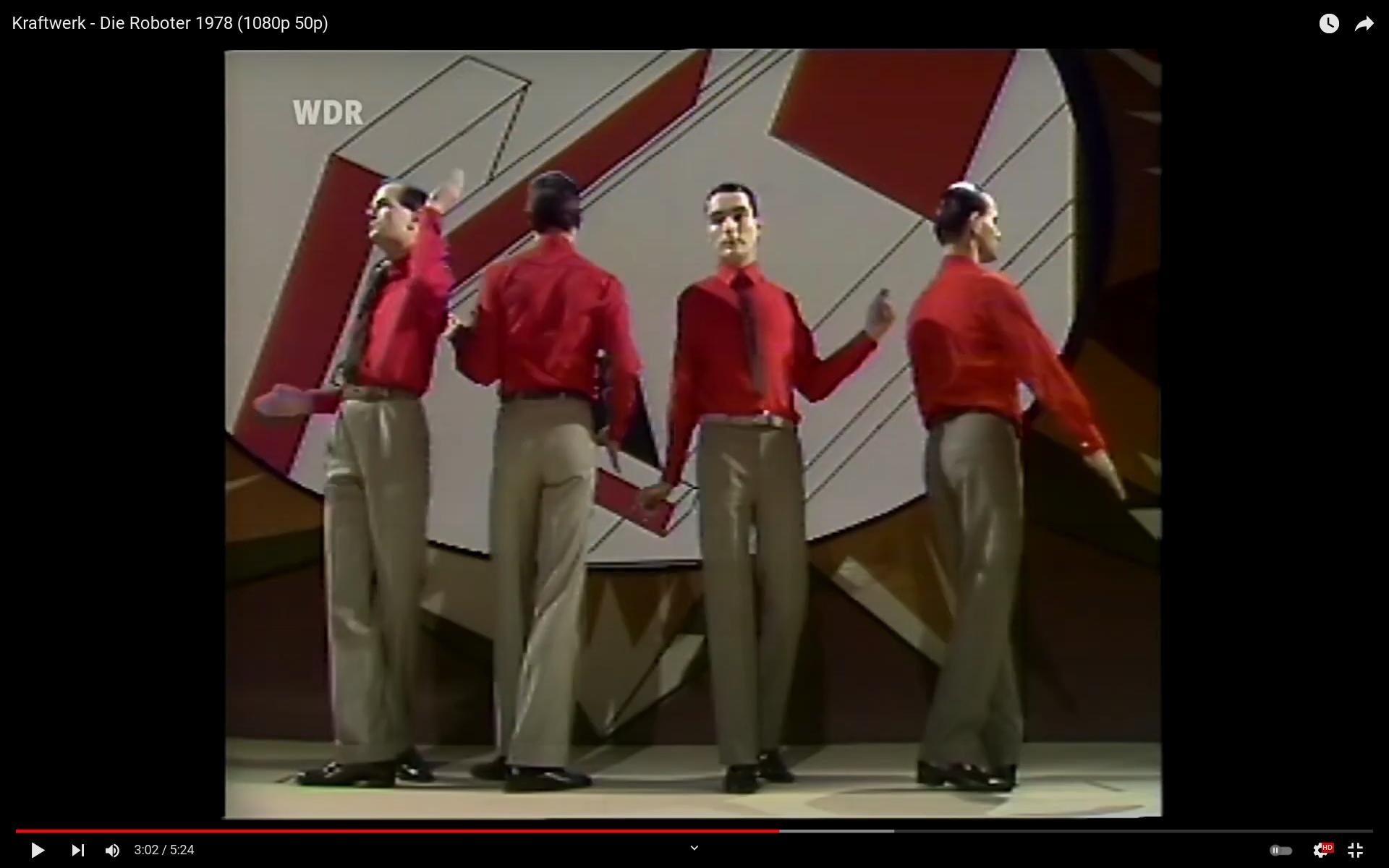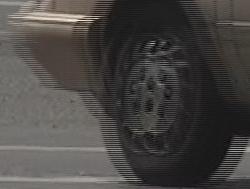The following video for Kraftwerk's Die Roboter is very interesting because it features some effects which I think might require a framebuffer to achieve. Having a framebuffer in 1978 would to my knowledge be a very big deal.
I'm interested in how the following effects were achieved:
First of all we see vertical mirroring of the video multiple times such as at 04:20 in the video. What's interesting is when the effect is enabled you can see a drop in resolution. This makes me suspect that it could have been an early digital framebuffer that helped with this effect. I'm not sure how else it could have been done.

Click to enlarge
Same test with original videoWhat's interesting about this is how perfect the mirroring is. I took the top half of the image and vertically flipped it using GIMP. I then moved it down in difference mode until I lined it up. Given that some people were talking about things such a recording studio monitors or using an actual mirror I was surprised how perfect the mirroring effect is.

Click to enlargeAt 3:02 we can see what looks like standard video that's been slowed down. What you'll notice about this part of the video is that the vertical resolution has been halved. Did they use a framebuffer for this or maybe it's possible with a professional video tape recorder to play the same fields multiple times and then use it for both the odd and even fields?

Click to enlargeAt 04:49 you can see horizontal mirroring. This one would just need a line buffer but is that how they did it?

Click to enlarge


